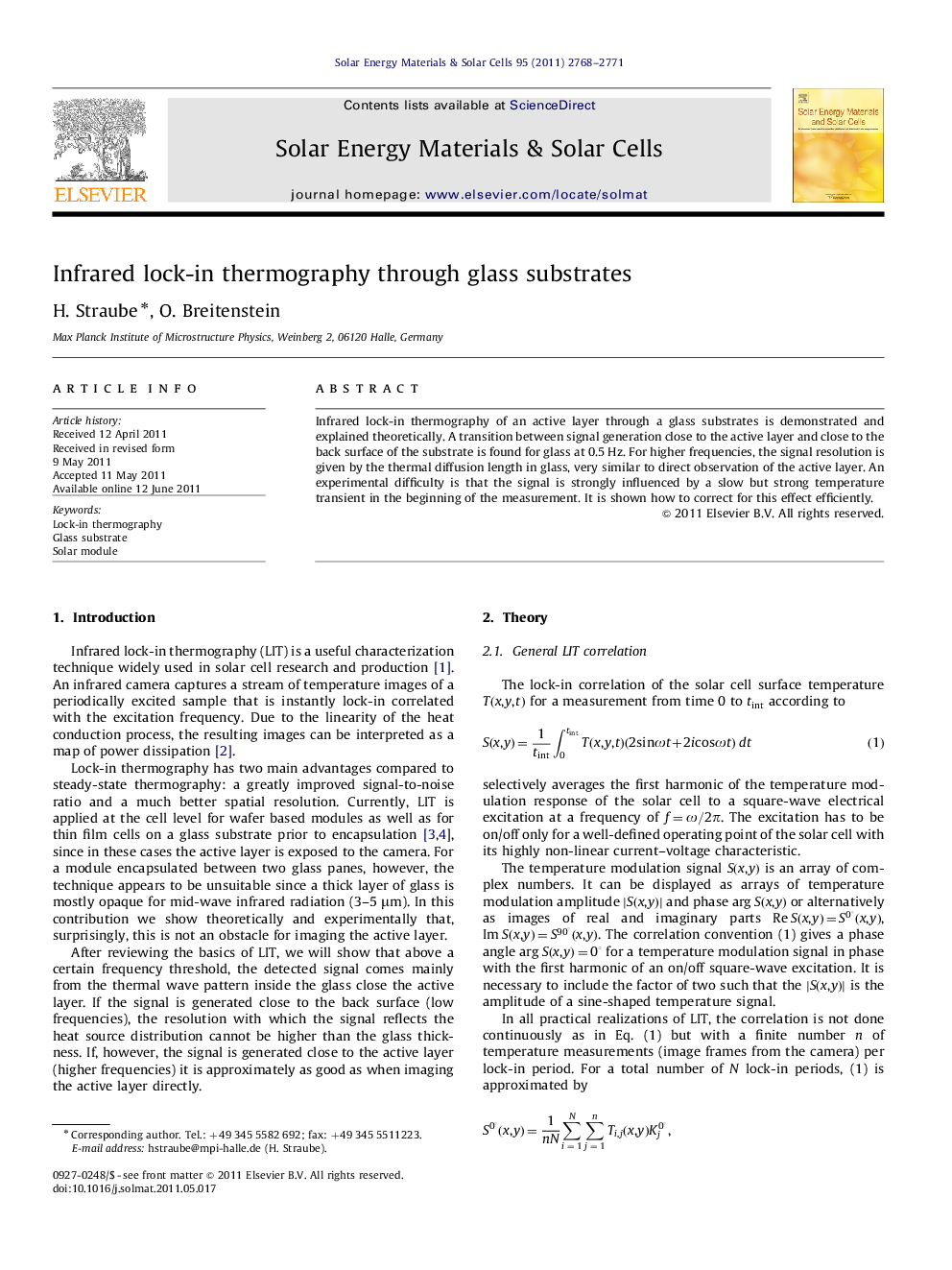| Article ID | Journal | Published Year | Pages | File Type |
|---|---|---|---|---|
| 78607 | Solar Energy Materials and Solar Cells | 2011 | 4 Pages |
Infrared lock-in thermography of an active layer through a glass substrates is demonstrated and explained theoretically. A transition between signal generation close to the active layer and close to the back surface of the substrate is found for glass at 0.5 Hz. For higher frequencies, the signal resolution is given by the thermal diffusion length in glass, very similar to direct observation of the active layer. An experimental difficulty is that the signal is strongly influenced by a slow but strong temperature transient in the beginning of the measurement. It is shown how to correct for this effect efficiently.
Graphical abstractFigure optionsDownload full-size imageDownload as PowerPoint slideHighlights► Infrared lock-in thermography (LIT) of an active layer through a glass substrates is demonstrated and explained theoretically. ► This happens for frequencies higher than 0.5 Hz even though glass is almost completely IR opaque. ► A strong spurious temperature drift signal can be corrected using a simple procedure. ► Application of LIT is thus extended to the analysis of encapsulation failures and degradation in glass–glass solar modules.
